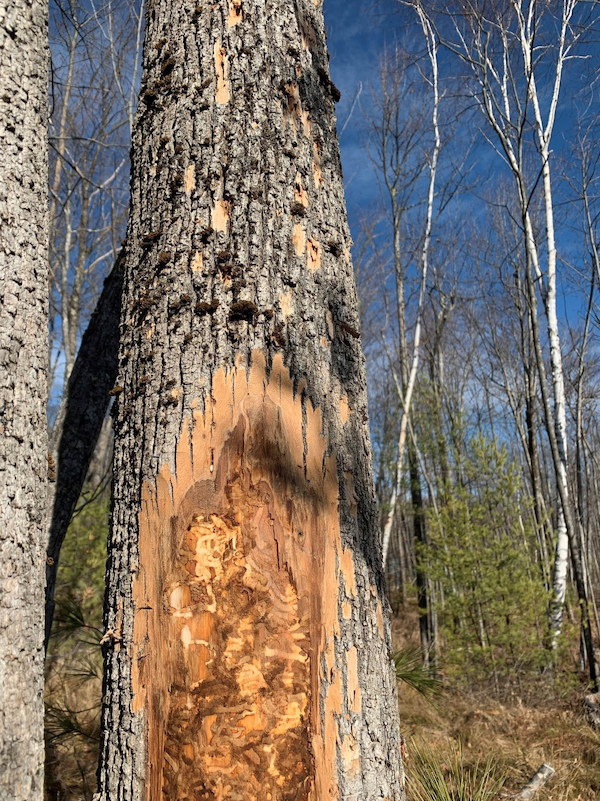Following an over-winter tree survey, Maine Forest Service recently announced that Emerald Ash Borers (EAB) have been found for the first time in the nearby cities of Saco and Westbrook. The Forest Service also stated that Emerald Ash Borers have become abundant enough in many parts of York County and some parts of Cumberland and Oxford Counties that signs of them on roadside trees can be clearly visible to the casual observer. Bark flecking or ‘blonding’ from woodpecker feeding is the most common sign of EAB, but vertical cracks in the bark, epicormic growth (abnormal branching or ‘water sprouts’ from the main trunk), and even dieback of upper branches are all being seen in some places.

An infested ash tree in Porter, Oxford County, with severe underbark “blonding”. Maine Forest Service personnel took this photo after observing woodpeckers near the tree, then peeled back the bark to reveal the ash borers’ “feeding galleries”.
The Forest Service report states that southern Maine is at the leading edge of a massive front of Ash Borers spreading from New Hampshire and Massachusetts, and beyond that, including much of eastern North America. It also states that Ash Borers are spreading more quickly in southern Maine than in northern Maine, where the smaller infestation there was caused by a single point source near Madawaska, and appears to be spreading at a slower rate. To help slow the spread of Emerald Ash Borer to new areas of Maine, DACF maintains a quarantine on ash trees, wood from ash trees, and hardwood firewood. EAB and other damaging forest pests are known to travel in and on firewood.
Things You Can Do to Help Slow the Spread of Emerald Ash Borers:
• Use local firewood
• Monitor for emerald ash borer even if you live outside of known infested areas
• Look for and report “blonding” and other signs of EAB. Report Emerald Ash Borer sightings here.
To participate in the Maine Forest Sevice’s girdled tree trap network, sign up at foresthealth@maine.gov.
Volunteer to run a green-funnel trap to look for EAB (need an ash tree and a commitment to collecting samples from the trap every two weeks, focused within and on the edges of regulated areas). To volunteer, send an email to: jan.santerre@maine.gov.


